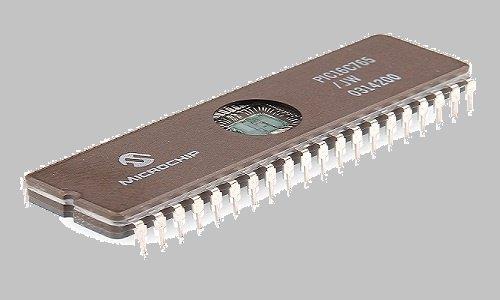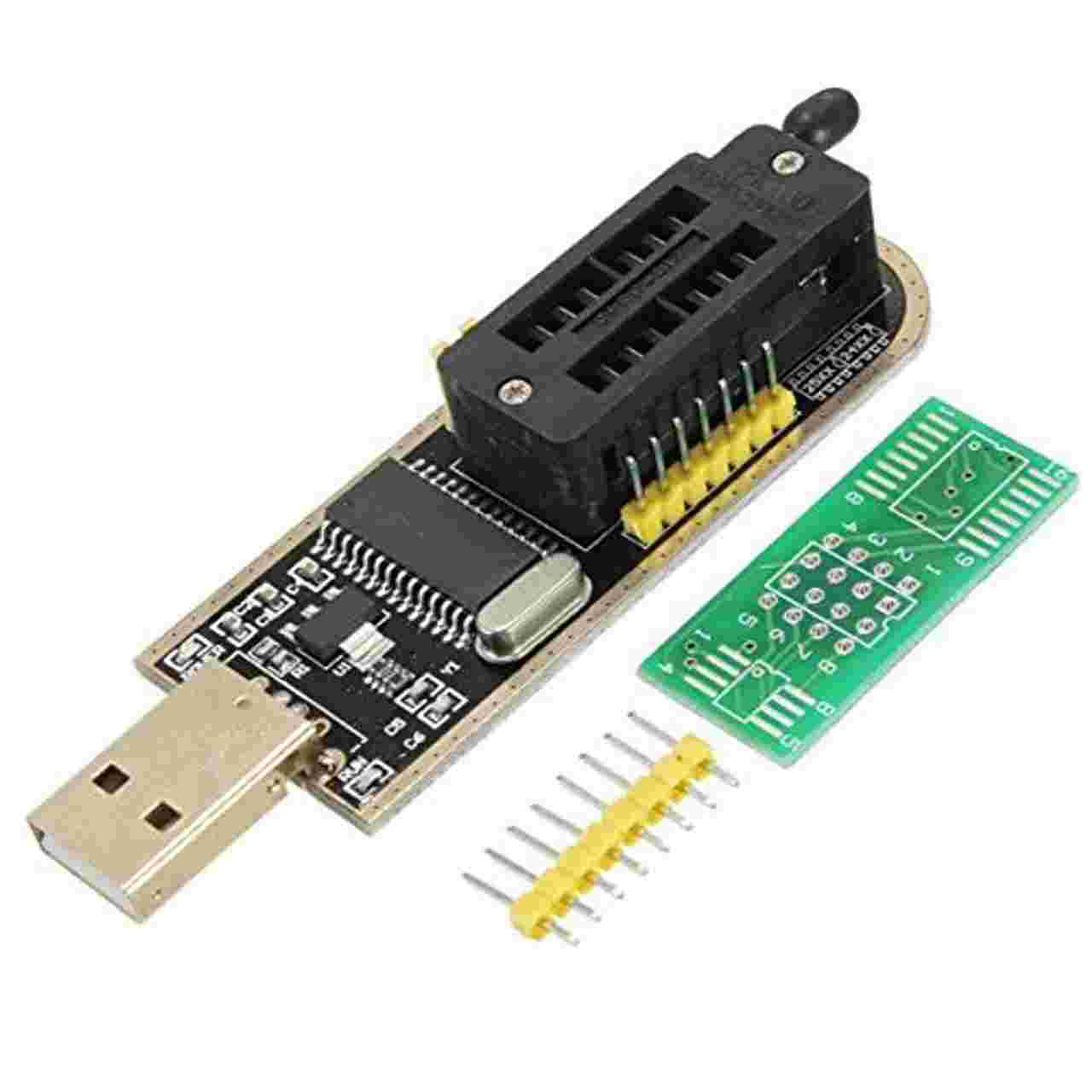Everything You Need To Know About EEPROM IC
Everything You Need To Know About EEPROM IC

EEPROM image source Quora
EEPROM stands for Electrically Erasable Programmable Read-Only Memory. It refers to the type of rewritable memory that can continue storing its data even without the power source.
This type of memory package is always categorized as a non-volatile memory type
Also known as E2PROM, EEPROM can be somehow compared to flash memory. This type of memory is used on USB flash drives and SD cards.
Unsurprisingly, flash memory is always considered a type of EEPROM. However, some major differences demarcate these two types of memory packages and we will look at them.
In this guide, we are going to discuss everything you should know about EEPROM.
We will look at what it is, how it works, where it is used, and many other vital details that you should know about E2PROM.
This information is vital to anyone who is planning to buy and use EEPROM.
Defining EEPROM
To know what EEPROM is, we will have to look at each letter in the acronym and understand its meaning.
As we have already stated, the acronym stands for the “Electrically Erasable Programmable Read-Only Memory”
Electrically Erasable means that the content of this memory type can be erased when the IC is connected to a power supply unit (PSU) through an electric circuit such as a motherboard. The deletion can be done on the entire chip or just a section of data can be erased from the chip.
Programmable means that the content of the memory module can be modified. This is done when the EEPROM IC is connected to an appropriate circuit, which in turn is connected to a computer. With the right supply of voltage, users can reprogram and modify the content of the memory module.
Read-Only in the EEPROM means that this data does not change dynamically. Such data include user files, firmware, and computer programs, among others. The IC has non-volatile functionality. This means that you can still retrieve data from the memory module even when power is not connected.
EEPROM working principle
How does an EEPROM IC work?
The EEPROM chip working mechanism is based on the principle of electric logic. Data is stored in binary form (“1” and “1”)
These electric charges are trapped in a floating gate, which determines the state of a data cell.
The cells have transistors that serve as switches. They change the state of charges from On to Off. The transistor also amplifies the charges.
Originally, EEPROMs were solely designed to support single-byte operations. However, with time, they can support multi-byte page operations. This increased the speed of the data transfer process.
The structure of a typical EEPROM consists of numerous floating MOSFET gates. Below the gates are the control transistors.
Transistors are separated from each other by an insulating oxide layer.
A high voltage is applied at the control gate of the IC this electric power will trigger the electrons to cut through the oxide layer and move to the floating gate. This is the programming process of the EEPROM.
What about deletion? This happens when electrons are trapped in the floating cell. This means that data will no longer be available.
Types of EEPROM
EEPROM ICs are classified into two main categories: serial EEPROM and parallel EEPROM.
What are they and what are the differences between them?
Serial EEPROM
Serial EEPROMs are low-power memory chips that are contained in a small eight-pin package.
The name is derived from the fact that data transfer on the chips is done serially.
While this interface is simple to implement, it comes with an array of disadvantages. One of them is the slow speeds of data transfer.
Some of the serial interfaces used on the serial EEPROM include serial peripheral interface, inter-integrated circuit, microwire interface, 1-wire interface, and UNI/O interface.
All these serial interfaces need control signals for excellent operation. The signals guarantee a smooth running of the EEPROM.
Additionally, serial EEPROM chips are packaged with three protocol phases. These are the operation code phase, address phase, and data phase. Each of these phases has a role to play in the smooth running of the IC chip.
Parallel EEPROM IC
Parallel EEPROM ICs have separate input and output pins. Each pin is designed to be used for a specific function.
The arrangement and configuration of these pins end up forming a parallel communication interface, hence the name parallel memory chips.
Just like in serial EEPROM, parallel has data, control, and address lines.
The parallel arrangement and configuration of these lines speed up the data transfer process. It is faster than the serial EEPROM configuration.
The EEPROM has a greater number of pins than the serial EEPROM. This is one of the reasons why it's faster and more efficient when it comes to data transfer and data management functions.
Serial vs parallel EEPROM IC: What is the difference?
We have just discussed the two types of EEPROM chips. What is the difference between them?
The mere fact that they have different layouts means that you should expect some major differences in terms of their performance levels.
Parallel EEPROM chips are generally assumed to be faster than the serial EEPROM chips.
The high speeds of parallel EEPROM ICs are mainly because all the pins facilitate the transfer of data simultaneously. This is unlike in serial interfaces where data transfer is executed sequentially on a data line.
The parallel arrangement of the data line also provides a wide bus width. This ends up facilitating fast communication or data transfer between the ends of the data line.
Serial EEPROM ICs, on the other hand, are considered cheaper than their parallel counterparts.
A good reason for their lower price is the number of pins that make up the data. This means that they are cheaper to manufacture than the parallel EEPROMs.
So, which type of EEPROM IC should I choose between serial vs parallel?
To make this decision, you will have to compare the pros and cons of each type of EEPROM IC configuration. From there, you can analyze the needs of your application.
EEPROM Programmers and Readers

Image source Pixel Electric
Programming is one element of EEPROM IC that you should know about.
Since they are known as “programmable” memory chips, it means that they can be programmed. How is this done?
An EEPROM programmer is used for programming EEPROM chips. It transfers codes into memory modules of EEPROMs.
Each piece of code that is written is designed to perform a specific function.
Also known as chip programmers, they come in different models and configurations. Some manufacturers specialize in producing EEPROM programmers and readers.
How is EEPROM programmed?
An electric connection is made between the EEPROM module and the programmer. This is usually done with the help of a printed circuit board (PCB). The programmer is then connected to a computer.
Codes or signals will be transferred from the computer to the programmer, and then to the EEPROM IC.
Closely related to EEPROM programmers are the EEPROM readers. These are devices that are designed to read data and codes that have been programmed into EEPROM ICs.
Like programmers, there are specially designed interfaces between the EEPROM chips and readers. These readers are then connected to the computer from which you will be able to read the codes on the chips.
Currently, some devices serve as both EEPROM readers and programmers. This means that you can program your IC while at the same time reading data and code that is written on it.
EEPROM vs Flash Memory: What is the difference?
Most people in the industry tend to confuse EEPROM and flash memory. Are these two terms interchangeable? Or what is the difference between the two?
Flash memory is usually considered to be a special type of EEPROM.
The physical and electrical structure of flash memory is similar to that of EEPROM. Additionally, it relies on electric voltage for reprogramming and even erasing data on the memory chip.
The process of erasing data on a flash memory is similar to that of erasing from an EEPROM, you can choose to wipe out the entire data or you can focus on just a section of data.
A single MOS transistor is used for erasing an entire block of data of FGTs. The same happens on EEPROM IC where there is one MOS transistor for every eight FGTs.
In both EEPROM IC and flash memory, FGT is designed to hold data while the MOS transistor is designed to erase the data.
Modern flash memory modules have large data capacities. They can also store different types of data, both static and semistatic.
USB and SD cards are the two most common types of flash memory types. They are quite popular thanks to their low cost and compact sizes. They can easily fit into small devices while at the same time being used for storing large volumes of data.
To conclude this argument, flash memory is a type of EEPROM that is specifically designed to support a wider array of data types and at the same time provide support for fast data speed.
EEPROM vs EPROM: What is the difference?
Before you make any purchasing decision, it is important to know the difference between an EEPROM chip and an EPROM chip.
The difference is on the “E”.
As we have defined, EEPROM stands for the electrically erasable memory chip. For the EPROM, data is not electronically erasable.
Data on the EPROM chips was manually erased. This was done by exposing an EPROM IC to high-intensity UV light rays. This will trigger ionization and erase the electric charges that are stored on the memory modules.
In short, EPROM is the older version of EEPROM.
Erasing data on the EPROM was tiresome and cumbersome. It was difficult to segment different sections of the modules to erase data. This means that most times the entire data was erased from the module.
However, even with EEPROM, EPROM is still used on some devices. The structure and design of EPROM have been improved over the years. Furthermore, UV technology has undergone some serious improvements, making it possible to erase data safely and conveniently.
Advantages of EEPROM
· EEPROM ICs are simple to program since you won't need any special tools or even take the modules from their devices.
· Electronic erasion of the modules is faster and safer than the use of UV that is used in EPROM
· You are free to delete either a section or an entire data.
· Since EEPROM is non-volatile memory, the data integrity of the device is preserved
Limitations of EEPROM
· The data retention capability of most EEPROMs is capped at 10 years. Beyond this period, there is a high chance that you will lose the data.
· Needs different voltage for reading and programming
· It takes long to gain full access to the external EEPROM
Conclusion
From this guide, it is clear that EEPROM sits at a vantage position in modern electronics.
It stores small volumes of data and computing instructions that devices and other electronic applications need.
We have also discussed types, features, and how EEPROM works.
In case you are planning to buy EEPROM for your application, you can use this information to make the right decision.
Additionally, one of the key factors that you should consider when it comes to buying EEPROM is the quality of the memory module.
Ensure that your EEPROM meets the highest quality standards.
While there are many ways of ensuring that you get premium-quality EEPROM ICs, choosing the right source will always remain to be one of the best.
A reputable supplier has adequate resources to get the best memory chips for their clients.
This is where Rantle East Electronic comes in.
We are a reputable reliable EEPROM supplier in China.
With over 20 years of experience in the field of electronics, you can fully trust us to deliver.
Whether you need an EEPROM IC or any other type of memory chip, just contact us. Our sales team is always on standby and ready to give you the necessary help that you need.
Kevin Chen
Founder / Writer at Rantle East Electronic Trading Co.,Limited
I am Kevin Chen, I graduated from University of Electronic Science and Technology of China in 2000. I am an electrical and electronic engineer with 23 years of experience, in charge of writting content for ICRFQ. I am willing use my experiences to create reliable and necessary electronic information to help our readers. We welcome readers to engage with us on various topics related to electronics such as IC chips, Diode, Transistor, Module, Relay, opticalcoupler, Connectors etc. Please feel free to share your thoughts and questions on these subjects with us. We look forward to hearing from you!







 Start With
Start With Include With
Include With


